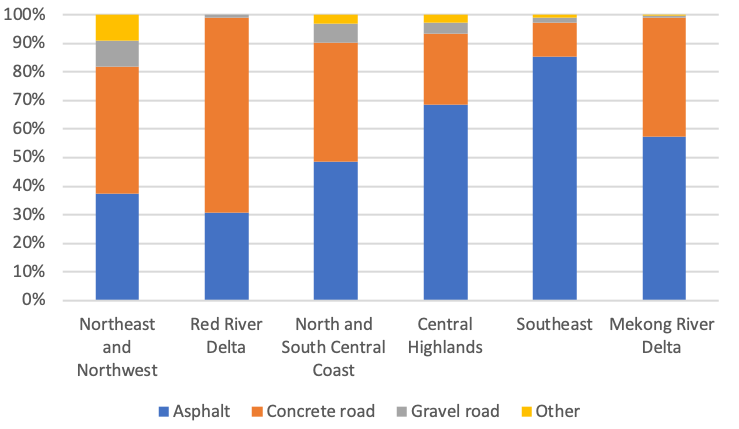About the Mekong Delta
Socioeconomic and Demographic Characteristics of the Mekong Delta
Besides geographical features, socioeconomic and demographic characteristics are determining factors that should be considered to evaluate the possibility of eliminating malaria. Specifically, the poverty rate and provision of healthcare infrastructure illustrate the capacity of the Mekong Delta to adopt new malaria prevention and control guidelines, whereas rates of immigration and economic development are indicators of the region’s susceptibility to importation of cases and new vector species. These factors directly explain why malaria is currently a health burden to isolated, mountainous, and forested areas as these are often remote, inadequately facilitated, and home to low-educational and poor communities (Manh et al., 2011; Hewitt et al., 2013).
Several socioeconomic and demographic indicators favor an optimistic outlook regarding malaria transmission in the Mekong Delta. It ranks second of six regions of Việt Nam for the proportion of communes with national-standardized clinics, indicating that vulnerable populations residing in the Mekong Delta can access good quality healthcare and updated interventions more conveniently (Figure 1).

The proportion of poor, near-poor and subsidized ethnic households in this region, an index that is strongly associated with malaria incidence, is also among the three lowest in Việt Nam (Figure 2).

In relation to timeliness of support for vulnerable groups in the Mekong Delta, transportation infrastructure promises easier access than in most regions as more than half of roads from ethnic villages to the central area are made of asphalt, with gravel roads only comprising 0.6% (Figure 3). Finally, the current continuous negative immigration rate indicates a lower risk of importing cases and new vectors of malaria (General Statistics Office of Việt Nam, 2023). However, the rapid economic development of the Mekong Delta may reverse this trend by attracting short-term laborers and seasonal workers to the region (Việt Nam Chamber of Commerce and Industry, 2023). This unregulated influx is a risk factor for reintroducing the disease (Kitvatanachai et al., 2003; Van Nam et al., 2005; Cui et al., 2018).

